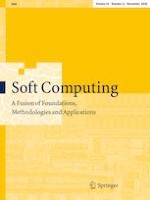19-05-2020 | Methodologies and Application
The effect of cutting tool material on chatter vibrations and statistical optimization in turning operations
Published in: Soft Computing | Issue 22/2020
Log inActivate our intelligent search to find suitable subject content or patents.
Select sections of text to find matching patents with Artificial Intelligence. powered by
Select sections of text to find additional relevant content using AI-assisted search. powered by
